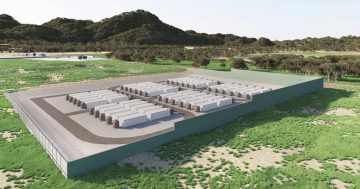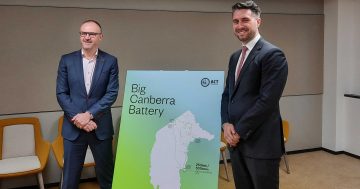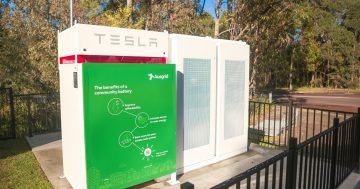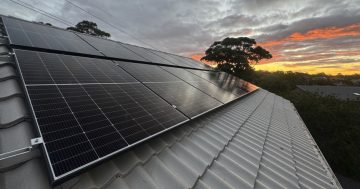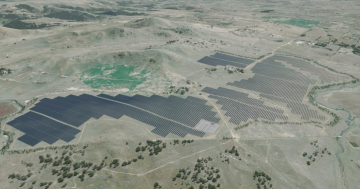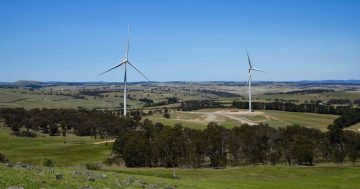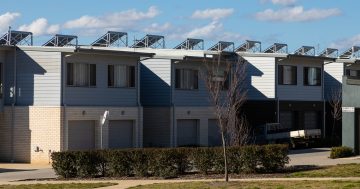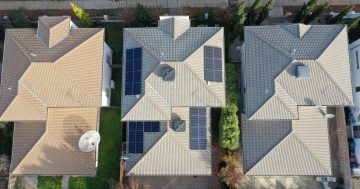
What the big battery at Williamsdale will look like. It will help stabilise the grid as renewable generation grows. Image: ACT Government.
A development application for a grid-scale, 250 MW battery complex at Williamsdale has been approved, with conditions, and is expected to start construction later this year.
To be built by Eku Energy in partnership with the ACT Government, the big battery will support grid reliability and help to integrate greater amounts of renewable generation into the electricity system.
It will form Stream 1 of the government’s Big Canberra Battery Project. It is designed to help future-proof Canberra’s energy supply and generate about 180 to 200 jobs.
The complex – including the battery, substations and power lines – will be built on a grazing block in an ‘electrical infrastructure hub’ near the southern border with NSW.
The hub includes the Williamsdale Solar Farm, Evoenergy and Transgrid substations, and Evoenergy’s Gilmore transmission line, to which the complex will connect.
The battery itself will consist of up to 136 standalone integrated battery/inverter stations (8.8 metres long x 1.7 metres wide x 2.8 metres high) and about 68 standalone transformers.
There will also be operational control buildings, a storage warehouse, toilet and shower facilities, and a 500,000-litre water tank for fire fighting.
Conditions placed on the project include the installation of acoustic noise walls, a dam to draw water from in case of fire, the restoration of native grasses and the replanting of trees cleared during construction.
Eku Energy CEO Dan Burrows said the project was a significant milestone, marking the company’s first GWh of projects in delivery in Australia.
“We are proud to be working in partnership with the ACT Government to deliver the development of the first stream of the Big Canberra Battery,” he said.
“The approval of the development application is an important milestone as we move towards construction commencement in 2024.
“This battery will provide safe, secure and reliable energy to Canberrans, and we are thrilled to be supporting the ACT Government’s commitment towards achieving net zero emissions in the Territory by 2045.”
The government has also finalised the installation of batteries at nine government sites across the city as part of Stream 2 of the Big Canberra Battery Project.
The sites are Belconnen Parks Depot, Gungahlin Family and Child Centre, Allara Depot, Kambah Depot, Ron Reynolds Centre in Cutin, Chifley Community Hub, Ngunnawal Bush Healing Farm in the south of the ACT, Cotter Depot and Greenway Ambulance Station.
The batteries capture energy generated from rooftop solar panels, which will help power the sites and reduce electricity costs, benefitting the broader network during peak electricity consumption times.
Two further batteries will be installed at Mt Stromlo High School and 255 Canberra Avenue, Fyshwick, in early 2025.
The government has also partnered with the Federal Government and Evoenergy through the Community Batteries for Household Solar Program to install three medium-sized neighbourhood-scale batteries in Casey, Dickson and Fadden.
A battery operator will be chosen in late 2024 after a tender process.
The government says the Big Canberra Battery Project will provide renewable energy security across the electricity grid, help the ACT grow its renewable energy sector, provide more local employment opportunities, and deliver a positive financial return for the Territory.
It says battery storage technology will be critical to reaching net-zero emissions.












